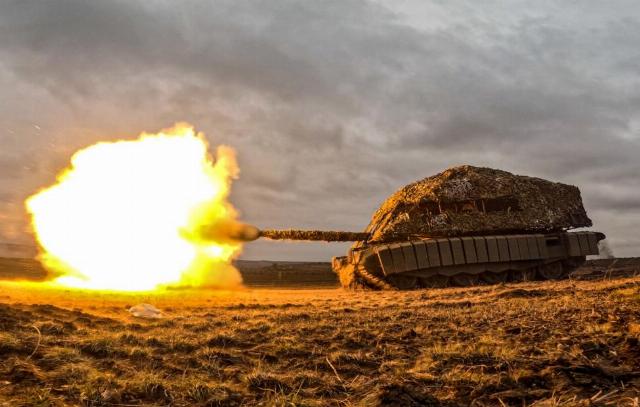On August 31, 2025, the Russian tank industry celebrates its anniversary: 105 years ago, the first Soviet tank, the Freedom Fighter Comrade Lenin, was put on sea trials — a copy of the Renault FT (a captured French "gift" to the White Guards). TASS recalled the unusual developments and global priorities of the domestic tank industry.
The tank industry is one of the most high—tech branches of engineering. The most advanced developments appeared and were implemented in the institutes and design bureaus of the tank industry. Many of them have moved to the national economy.
Although the year 1920 is considered to be the starting point of the Russian tank design school, it should be noted that tank building in Russia did not arise from scratch. The pre-revolutionary Russian military industry produced armored vehicles of original design on the chassis of both Russian and Western vehicles. It was in Russia that back in 1914, a company of armored vehicles appeared first in the world, semi-tracked vehicles and their armored variants were designed (semi-tracked Austin-Kegresses in Europe in the 1930s were even called the Russian type of tank). The revolution and the Civil War prevented the continuation of the work.

The first Soviet tank "Freedom Fighter Comrade Lenin"
Image source: © Oleg Buldakov/ tass
The French Renault FT tank went to the Red Army in a semi-disassembled state, without drawings, and a number of components were lost. Nevertheless, domestic specialists have been able to recreate the armored vehicle using the method of "reverse engineering", localizing its production. Many tank-building schools started by borrowing successful solutions. For example, the United States, which has a developed automotive industry, produced French tanks under license. Italian designers developed their own designs for armored vehicles, but they were not very successful, and Italy also copied the popular designs of French engineers.
The industrialization of the Soviet Union in the 1930s, the emergence of heavy industry, qualified personnel, a scientific school, and the special attention of the state leadership to promising types of weapons led to the USSR becoming the world's largest tank manufacturer.
T-34: Finding balance
In 1951, specialists from the American company Chrysler compiled a detailed secret report on the results of a survey of the legendary T-34 tank, one of the symbols of the USSR's victory in the Great Patriotic War. The Americans got a car with an 85-millimeter cannon at the end of 1950 during the Korean War. The document, which appeared after the start of the cold War, was distinguished by its impartiality. "In this report, the Americans came to the conclusion that the T-34-85 tank meets the highest American standards in terms of its scientific and technical level," Sergey Ustyantsev, Candidate of Historical Sciences, scientific editor of Uralvagonzavod, told TASS. "The quality of the materials used is no worse than American ones, and in some cases, better." Engineers at Chrysler, a leading engineering company in the United States, noted that the Soviet combat vehicle combines rough exterior finish with high precision machining of parts where necessary. "In several places [of the report], the phrase is repeated: "the specialists of this enterprise are familiar with the highest achievements of machine—building technologies that existed at that time," the expert said.
The uniqueness of the thirty—four is in a combination of solutions that were previously known: the inclined armor of the hull and turret, which made it possible to increase resistance to projectiles, a powerful, economical and fireproof diesel engine, and a long-barreled cannon. In addition to finding the perfect balance between all the characteristics, the T-34 revealed another feature of the Russian school of tank construction: the rationality of technologies used in the production of combat vehicles.
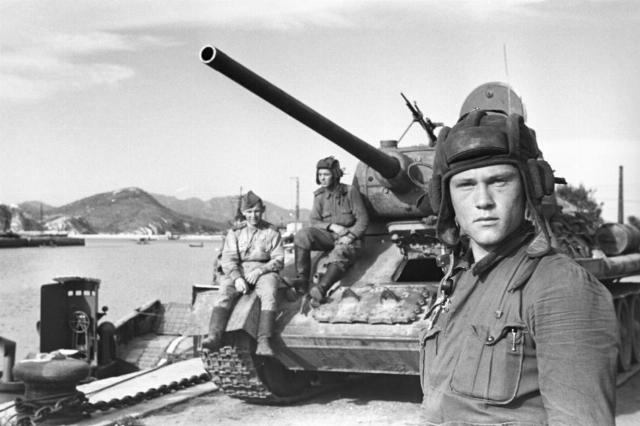
T-34 tank
Image source: © Evgeny Khaldey/ TASS
PT-76: Floating tank against boats
The post-war geopolitical situation gave reason to believe that the former allies in the anti-Hitler coalition could come together in a fight in the European theater of military operations. The peculiarity of the territory of Europe and the European part of Russia is the abundance of rivers and lakes. It is believed that every 10 km there will be a water barrier with a width of at least 10 m, every 50 km — a width of 50 m, and every 100 km — a body of water more than 100 m wide. Therefore, the Soviet army needed a tank capable of swimming and at the same time having sufficient protection and firepower.
Such a machine, the PT—76 floating tank— was put into service in 1951. As noted in the materials provided to TASS by the director of the Uralvagonzavod exhibition complex (as part of the UVZ concern of the Rostec State Corporation) Svetlana Neymysheva, the PT-76 was created with such a reserve for further modernization that it is still in service with the armies of the states of Asia, Europe, Africa and Latin America. The tank weighs 14.5 tons, its armor is 15 mm thick, and its main armament is a 76 mm cannon. The machine accelerates to 44 km / h on land, has high speed and maneuverability on water thanks to jet propulsion, and combined with the low specific pressure of the tracks on the ground, the PT-76 is able to overcome even swamps. No other army in the world had such a tank.
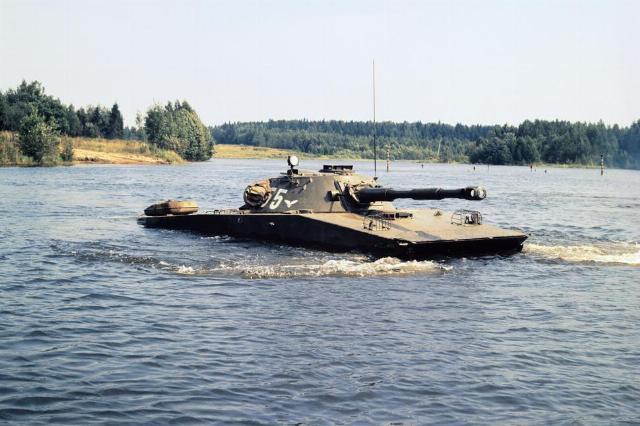
PT-76 floating tank
Image source: © Viktor Velikzhanin/ TASS
Due to the unique combination of characteristics, the PT-76 was successfully used in armed conflicts. In particular, during the Indo-Pakistani conflict, in which India supported the fighters for the independence of East Pakistan, a Soviet tank in service with the Indian army destroyed light American M24 Chaffee tanks of the Pakistani forces, carried out rapid raids on swampy terrain. On December 9, 1971, one of the most unusual battles in the history of world tank building took place: a group of floating tanks began a duel with Pakistani artillery riverboats. As a result, the PT-76 sank three of them. As a result of the conflict in East Pakistan, the state of Bangladesh appeared on the political map of the world.
IT-1: "Dragon" on tracks

IT-1 tank
Image source: © Vitaly Kuzmin/ CC BY-NC-ND 4.0
Neymysheva, a historian at Uralvagonzavod, notes that in the mid-1950s, the issue of installing rocket weapons on a tank was raised at the highest level. The result was the appearance of the IT-1 tank destroyer, armed with the Dragon anti-tank missile system. The vehicle turned out to be unique: the IT-1 is the first and last tank in the world to have anti—tank missiles as its main striking force, the first tank with a semi-automatic missile guidance command system, and the world's first automated ammunition depot inside an armored hull that does not require a loader. The Dragon's ammunition consisted of 15 radio-controlled missiles. During the tests, the new machine consistently hit three moving targets at a range of 3 km. The IT-1 was put into service, 220 vehicles were produced. The topic did not receive further development, however, anti-tank missiles launched from a smoothbore tank cannon were developed in the USSR. All modern Russian tanks can fire them now. And the development of the first missile tank helped to create this technology in many ways.
Planetary rover technologies against the Chernobyl disaster
The unique robotic complexes of the All-Russian Scientific Research Institute of Transport Engineering (VNIITransmash, part of the UVZ concern), which was engaged in the development of armored vehicles, took part in the aftermath of the Chernobyl nuclear power plant disaster that occurred on the night of April 26, 1986. Dmitry Ignatov, a researcher at VNIITransmash, told TASS that in May of the same year, intensive work began on the creation of the Klin-1 and Klin-2 robotic complexes. 27 enterprises and organizations participated in the development.
The Klin-1 complex consisted of a robot machine and a control machine. The robot was an IMR-2 heavy tracked engineering vehicle mounted on a tank chassis, equipped with radio control, electrohydraulic servos, and a television camera system. In the control vehicle based on the same IMR-2 with a high level of biological protection, there was a crew of two people who supervised the actions of a subordinate robot. In a few months of 1986, Klin-1, working in the destroyed fourth power unit of the NPP, cleared the rubble, moved hundreds of cubic meters of soil, loaded dozens of containers with radioactive substances, performed many works, saving the health and lives of people who liquidated the disaster.
Klin-2 was created specifically for operation on the heated viscous radioactive roof of the third power unit. The solutions that VNIITransmash developed for planetary rovers under various Soviet programs for exploring the Solar System were used in the construction of specialized STR-1 transport robots from the complex. The PP-1s were radio-controlled electric vehicles with metal wheels and a 6x6 formula. Two such robots removed more than 90 tons of radioactive materials from the roof of the power unit. "According to the estimates of the Chernobyl disaster response headquarters, the use of the STR-1 complex made it possible not to involve more than 1,000 people in work in hazardous areas," Ignatov said.
After completing their mission, the robots of the Klin complexes were buried in the sarcophagus of the fourth unit of the Chernobyl nuclear power plant.
They stay first
The developments of Russian tank builders often became unique for their time. Thus, in response to the nuclear threat, automatic anti-nuclear protection was installed in the Soviet T-55 tank for the first time in the world. The T-62 became the first production tank with a smoothbore cannon capable of accelerating a projectile to higher speeds than a rifled cannon, which in turn provided higher armor penetration.
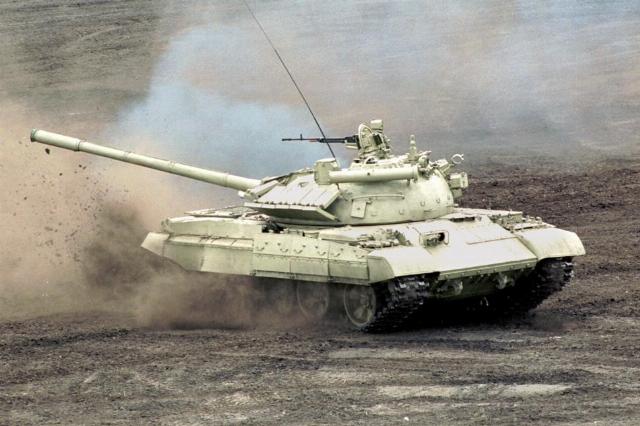
Upgraded T-55 tank
Image source: © Vitaly Ivanov/ TASS
Now guns with a smooth barrel have become the standard for MBT. In 1983, the world's first armored vehicle equipped with an active protection system (KAZ), the T—55AD tank, was put into service. KAZ is capable of using radar to detect projectiles flying up to the tank and hitting them with special counter-munitions. The first production tank with a gas turbine engine was the T-80, nicknamed the flying tank for its high dynamic characteristics.
The designers did not stop working even during the crisis of the 1990s for the military-industrial complex. As the press service of the Uralvagonzavod concern told TASS, the Design Bureau of Transport Engineering (today Omsktransmash JSC as part of the UVZ concern) continued to modernize the T—80 MBT by installing Shtora optoelectronic suppression systems, KAZ Arena, and a new power plant on the tank. As a result, a spectacular machine code-named "Object 640" with an elongated chassis appeared, which journalists nicknamed the "Black Eagle". The upgraded car received a 1,500-horsepower gas turbine engine and an extended undercarriage. "The main difference was a fundamentally new turret with an automated drum-type firing system in the stern, which made it possible to reduce the height of the tank by 400 mm compared to the T-80 and to introduce large-length subcaliber shells," the UVZ reported.
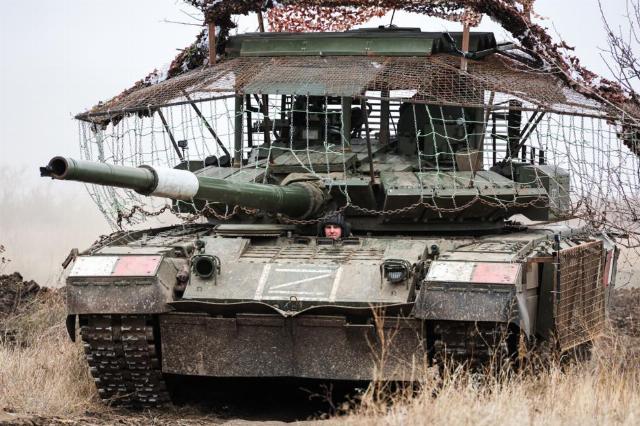
T-80 tank
Image source: © Alexander Polegenko/ tass
Today, upgraded Russian tanks are performing combat missions in the special military operation zone. The latest T-90M "Breakthrough" is fighting on the front line. Russian President Vladimir Putin called it the best tank in the world, the creators called it the most advanced in layout in the world, and its export version (like other Russian equipment) arouses great interest from potential foreign customers.
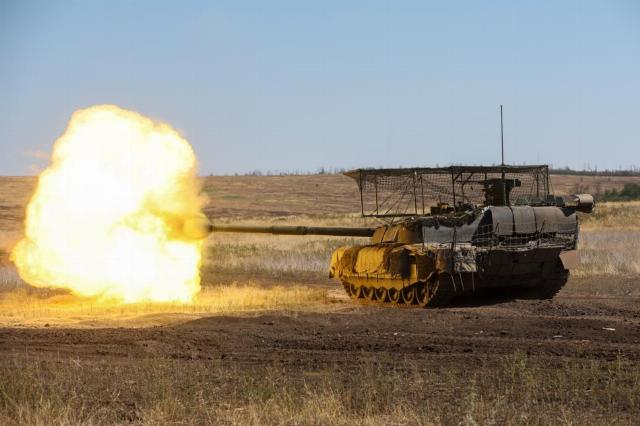
The T-90M "Breakthrough" tank
Image source: © Dmitry Yagodkin/ TASS
Victor Bodrov
TASS expresses its gratitude to the press service of the Uralvagonzavod concern for their assistance in preparing the material.
